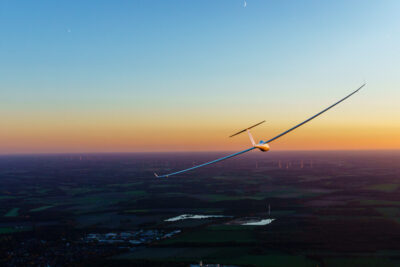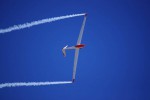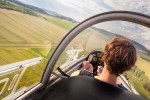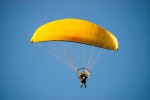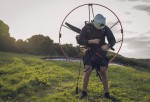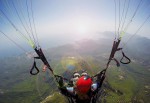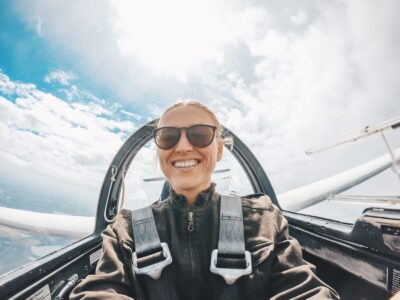Gliding Safety: Can You Parachute From a Glider?
19 September 2023 | Updated on January 03, 2024
Paragliding and soaring through the skies in a glider are experiences that leave countless pilots and enthusiasts awestruck. But what if you found yourself in an emergency while mid-air in a glider? Would parachuting out be a feasible or safe option? This question, “can you parachute from a glider?“, has intrigued many, from novice aviators to seasoned glider pilots. In this article, we delve into the practicalities, safety considerations, and essential facts about this scenario.
Gliders, or sailplanes as they’re also known, are designed to maximize lift and minimize drag. But unlike traditional aircraft, they lack an engine, relying on natural currents and air movements to stay aloft. This distinction brings forth unique challenges and questions when considering emergency situations, as you’ll learn in the following article.

Important Disclaimer: The information and data provided here are for informational purposes only, and are subject to change over time. We strive to provide the most current and relevant information, but the dynamic nature of the topics discussed may result in changes that are not immediately reflected in our content. We recommend our readers to conduct their own research and consult with professionals when making significant decisions based on the data or information provided here. Your reliance on the information in this post is solely at your own risk.
Understanding Gliders
Before we jump into the main topic, it’s essential to understand what exactly a glider is. A glider, or sailplane, is a type of aircraft that’s designed to fly without the use of an engine. Instead, gliders rely on the basic principles of aerodynamics to stay aloft, using rising air in the atmosphere such as thermal updrafts to gain altitude.
Commonly used for leisure activities, gliders offer the thrill of soaring through the skies powered only by the forces of nature. They’re also used for sports, like in gliding competitions, and in some cases for scientific research, due to their ability to stay in the air for extended periods and cover significant distances.
As with any form of aviation, safety is paramount in gliding. Given their engineless design, gliders are equipped with specific safety features and procedures. They are designed to be inherently stable, easy to control, and capable of performing a controlled landing even without engine power. However, in certain rare and extreme circumstances, an emergency exit from the glider might be required, which brings us to the heart of our discussion: Can you parachute from a glider? In the next sections, we will explore this question in depth, examining the practical, physical, and aerodynamic aspects involved.
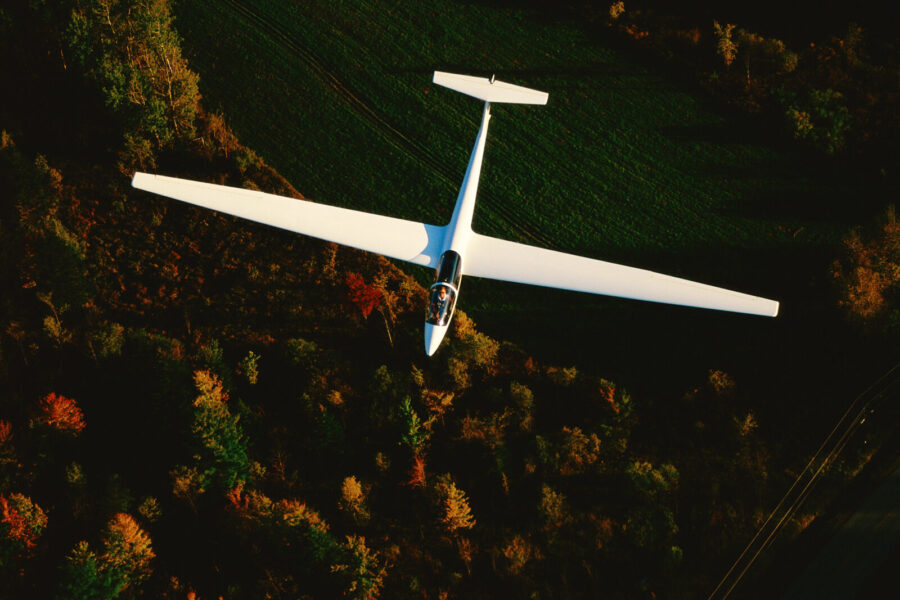
Can You Parachute From a Glider?
The concept of parachuting from a glider raises both intrigue and curiosity. However, when it comes to the feasibility of such an action, several factors must be considered.
One of the primary concerns is the physical and aerodynamic limitations of gliders. Unlike powered aircraft that generate thrust and maintain forward momentum, gliders solely rely on the natural forces of lift and gravity to sustain flight. As a result, gliders generally have slower airspeeds and different flight characteristics compared to powered aircraft. These factors affect the practicality of parachuting from a glider.
Furthermore, the design and structure of gliders pose challenges for parachuting. Gliders typically have a high aspect ratio wing, which means they have long, narrow wings that provide optimal lift-to-drag ratios. While this wing design enhances glide performance, it also restricts the available space and potential mounting points for parachute deployment systems.
Another critical consideration is the availability of emergency landing areas. Gliders are designed to land safely even in the absence of an engine. Pilots are trained to identify suitable landing sites and execute controlled landings. In most cases, an emergency landing in a predetermined area would be the preferred option rather than resorting to parachuting.
Despite these limitations, there are rare situations where parachuting from a glider becomes necessary, such as in the case of an irrecoverable loss of control or an uncontrolled descent. In such scenarios, the use of a parachute might provide a last-resort means of safely exiting the glider.

A glider pilot seated in his cockpit, equipped with a parachute for safety. The parachute serves as a last-resort measure for emergency situations.
Why do Glider Pilots Wear a Parachute?
The primary reason glider pilots wear parachutes is to be prepared for unforeseen emergencies. Gliders, though serene, can encounter challenges, such as mid-air collisions, structural failures, or unmanageable situations that might compel a pilot to abandon the aircraft. It’s worth noting, however, that such scenarios are exceedingly rare. The parachutes are not worn with the intention of jumping out for fun or leisure. Instead, they are a last-resort safety measure, akin to a life vest on a boat. The act of parachuting out of a glider is treated with the utmost seriousness, and pilots undergo training to understand precisely when and how to deploy their parachute should the need arise.
Comparatively, the decision-making process in a glider during an emergency can be a bit different than in powered aircraft. With no engine to fail and a design that inherently seeks to stay aloft, gliders often have more options for landing safely. The parachute is just one of the many tools in the safety arsenal of a glider pilot, emphasizing the profession’s commitment to safeguarding both the pilot and those on the ground.
Parachuting from Gliders by Choice
While the general consensus leans toward the rarity of parachuting from gliders, there are exceptions that blend both skill and the pursuit of adrenaline. These are calculated maneuvers performed by professionals under highly controlled circumstances.
A prime example of this daring blend of gliding and parachuting is exhibited by the Red Bull team. With their exceptional aerobatic displays, members of this team have been known to leap from a Blanik glider, transforming the calm glide into a heart-pounding spectacle. This act is more than just an adventurous jump; it’s a choreographed performance, often accompanied by stunning aerial maneuvers both from the parachutist and the glider itself.
You can see them in action in the following video:
It’s essential to emphasize, however, that such stunts are exceptions and not the rule. While they make for awe-inspiring visuals, they are carried out by professionals with extensive training and experience, emphasizing the vast difference between everyday gliding and specialized aerobatic displays.
Misconceptions and Clarifications
When it comes to parachuting from gliders, popular culture and the imagination of the masses have painted a picture that doesn’t always align with the realities of the aviation world. To many, the idea of jumping from a glider and parachuting to the ground seems like a thrilling adventure, an exhilarating escape from an airborne craft. However, the actual reasons and circumstances are more grounded in safety than in adrenaline rushes.
To start with, the occurrence of pilots needing to parachute out of a glider is statistically very low. Most glider flights are uneventful, marked by grace and precision, rather than unexpected emergencies. Gliders are engineered for stability and efficiency, and the vast majority of flights see them returning to the ground without any incident. In fact, parachuting from a glider is so rare that when it does happen, it’s more often than not newsworthy within the aviation community.
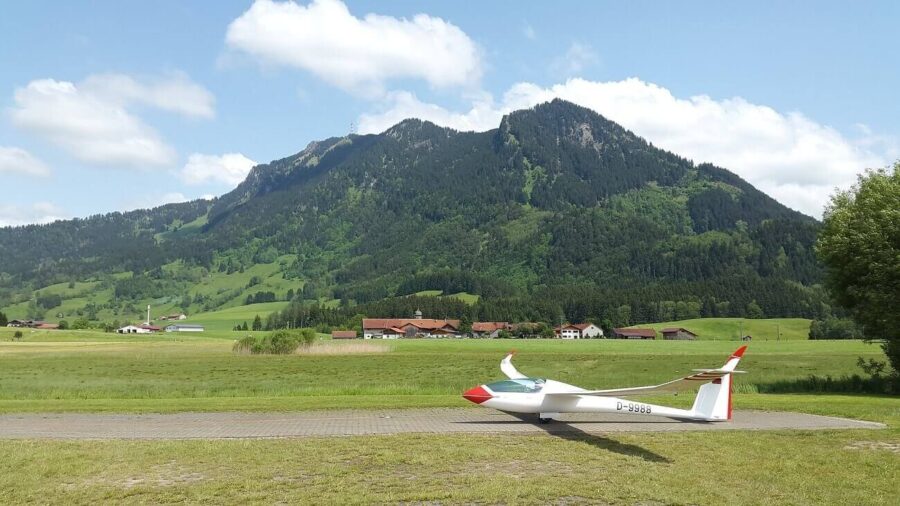
Emergencies in gliding, when they do occur, can often be addressed through other means. The parachute, though an essential safety tool, is a last-resort measure. It’s akin to the ejection seat in a jet fighter – invaluable in a dire situation but not something a pilot ever truly wants to use. Furthermore, the presence of a parachute is not an indication of the glider’s reliability or the skill of the pilot. Instead, it’s a testament to the aviation community’s dedication to ensuring every possible safety measure is in place, regardless of how infrequently it might be needed.
In summary, while the idea of parachuting from a glider can captivate the imagination, the actual practice is rare, grounded in safety protocols, and far from the adventurous scenario many might envision.
